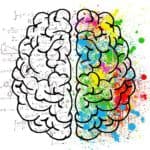This blog post is extracted from an interview with Mary Meeker by Betty D. Watkins.
“All children have intelligence. We have asked the wrong question. We ask how much. We must ask what kind.” – Mary Meeker
In the late 1800s, Alfred Binet was commissioned to develop a way of identifying children who could not learn in school. Binet’s test was modified at Stanford University by Terman for use by American children. Thus were the intelligence test and the I.Q. score created. The Standford Binet Intelligence Test is still used to identify ability to learn in school.
The Stanford Binet is primarily a test of verbal ability. Due to Mary Meeker’s work it has been challenged because it favors children from highly verbal, standard English speaking homes and discriminates unrealistically against those from other backgrounds (or who may be equally gifted in intellectual abilities other than standard English). IQ scores as determined by the Stanford-Binet and the Wechsler, a similar instrument, are highly correlated with school success because both depend on verbal abilities. Unfortunately, they have also been assumed to be valid determinants of intelligence.
Assuming that the I.Q. Tests are adequate measures of intelligence, psychologists and educators accepted the notion that the I.Q score of an individual does not change significantly alter the age of ten or twelve. It does, of course and usually goes down. Studies by Sir Cyril Burt on identical twins reared in different environments, indicated that the I.Q. score was not significantly affected by environment. It was therefore concluded that intelligence was genetically determined and that a potential I.Q. present at birth, was not appreciably changed by what happened to the individual. After Burt’s death in the 1970s, it was discovered that much of the data he had reported to support his theory of the genetic origins of intelligence was fraudulent.
No sooner was this theory established than it began to unravel. The now classic works of J. McVicker Hunt (Intelligence and Experience, 1961) Mary Meeker, (The Structure of Intellect: It’s Use and Interpretation, 1969) and Benjamin Bloom (Stability and Change in Human Characteristics, 1964) concluded that intelligence was strongly influenced by the environment. Meeker pointed out that the I.Q. Tests were not based on theory. From 1944 to 1959, however, painstaking research was being done to define more accurately the concept of intelligence.During World War II the Air Force, using I.Q. scores as basic selection criteria for pilot training, was experiencing a 35% failure rate among pilot trainees. J.P. Guilford was hired to develop more effective selection criteria. Through factor analysis he determined the specific abilities needed to pilot an airplane, devised assessments to identify these abilities, and the potential for developing the necessary skills.
Guilford continued this work in the Aptitudes Project at the University of Southern California. The Guilford Model proposed intelligence to be composed of 120 discrete factors. An ability defined as a “a unique ability or intellectual function”. When the model was first proposed, only 50 of these components had factored. As research continued, 90 of the abilities were verified, solidifying the theory.
The Structure of Intellect system classifies intelligence along three dimensions, in a model referred to by Guilford’s students as our “mental block”.
Meeker applied the Gulford S.I. theory. This is called the SOI. The SOI-LA Test measures five operations: cognition (comprehension, recognition). memory (storage), evaluation (decision making), convergent production (seeking the “right” or “best” answer), and divergent production (creativity, seeking a variety of possible solutions or answers).
A second dimension comprises the contents of intellectual processing: figural spatial (concrete information having shape and form, by the senses of sight and hearing), symbolic (letters, signs, digits), semantic (verbal meanings or ideas) and behavioral (social information).
The third dimension tracks the products of the intellectual process: units (single bits of information), classes (characteristics, attributes in common), relations (connections, associations between units), systems (organization, sequence of information), transformations (reconstruction, an aspect of creativity) and implications (predicting consequences). The use of the Structure of Intellectual model makes possible answers to the question “What kind of intelligence?”
Two other aspects of applied Structure of Intellect research merit attention. One is that information gathered from SOI tests is never combined into a single score. Instead the information is used to indicate a pattern of strengths and weaknesses for a particular individual. Several tests may be considered together to indicate that an individual is, for example, strong in evaluation skills but week in symbolic skills. National norms have been developed so that an individual’s scores may be compared with population averages. Such comparisons indicate relative strengths or weaknesses.
The second important aspect of this model is its direct applicability to education. Research indicates that abilities can be developed through systematic training. In other words, intelligence can be improved.
Mary Meeker, a students of Guilford at U.S.C. in the early 1960s, was the first to explore the educational implications of the model. She focused on identifying those abilities most critical for traditional school learning and found twenty-six which she refers to as the “basics” in education. Without these basic abilities, which can be improved through training, the student will have difficulty in mastering the skills of reading, writing or arithmetic.
Dr. Meeker and her associates have developed testing instructions to determine performance in the target areas and also teaching materials to remediate areas of weakness. Materials are available from age 4 through adults.
Another major application for SOI theory has been in career counseling. Patterns have been derived for numerous specific occupations. This information indicates an individual’s pattern appropriateness for certain occupations.
Dr. Meeker notes that educators of the gifted have been the first to recognize the potential of the SOI. She credits the tendency of educators of the gifted to think in terms of positive not deficit intelligence. SOI profiles of the gifted show areas of strength and weakness and can suggest strategies to strengthen areas of weakness. Special educators think in terms of deficit intelligence. They, probably more than educators of gifted, need to use the SOI-LA to identify strengths which if developed, can lead to employability.
For, example, Dr. Meeker found that not all gifted children have superior scores in evaluation (problem solving, decision making) and divergent production (creative) abilities. The need for these skills to provide leadership in our complex society cannot be overemphasized nor the need for creative problem solving of the world’s problems. Moreover, the explosion of information makes the acquisition of past knowledge inadequate.
Learning how to learn must become a basic aim of education.
The SOI model provides strategies for accomplishing this goal.
This interview was conducted circa 1980.






